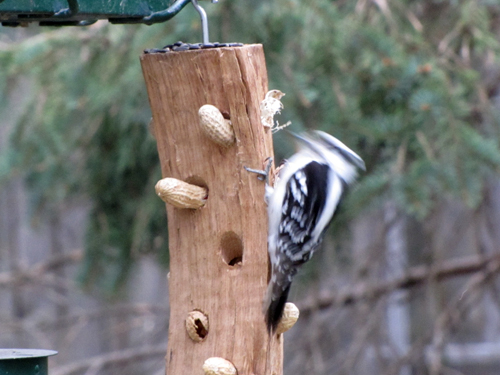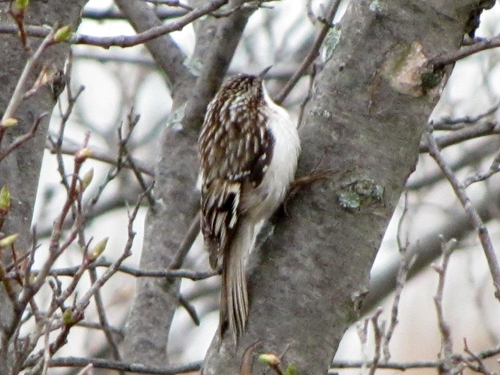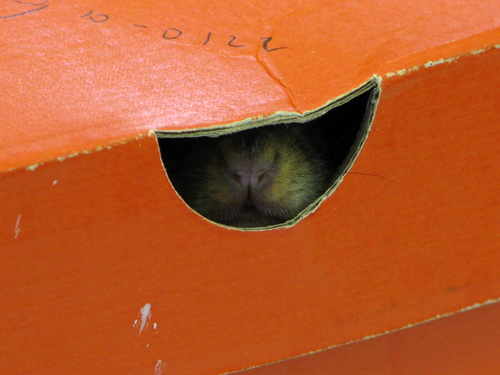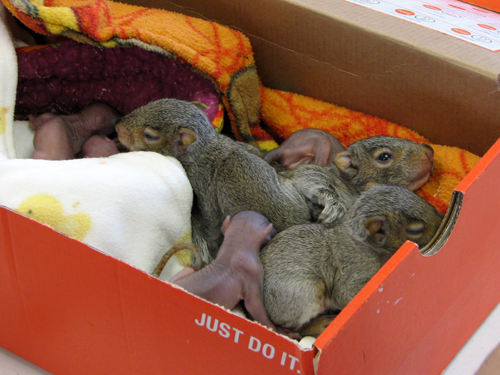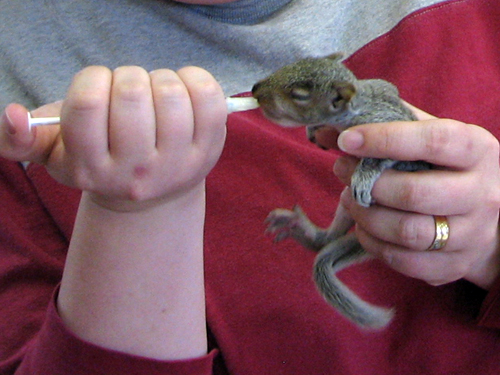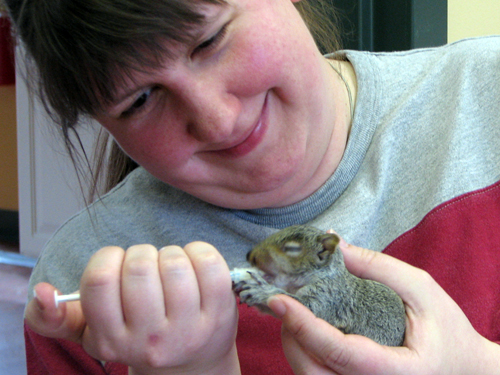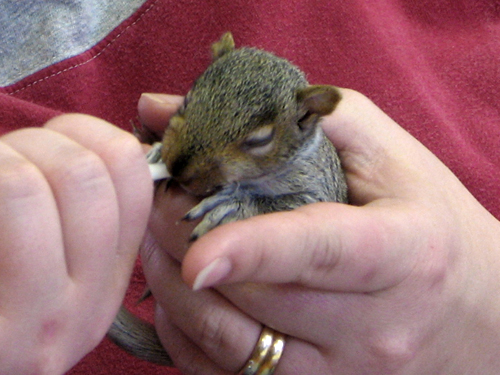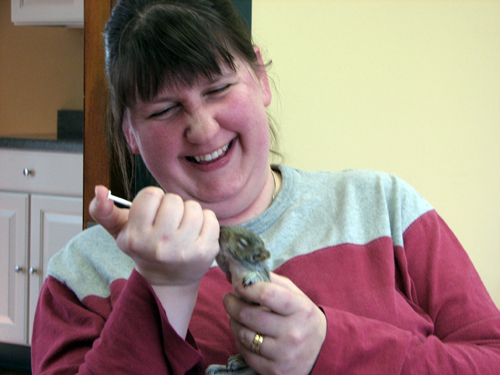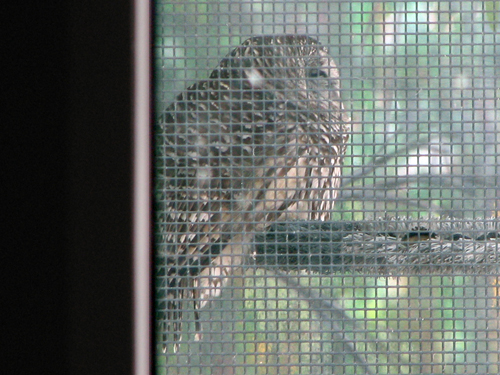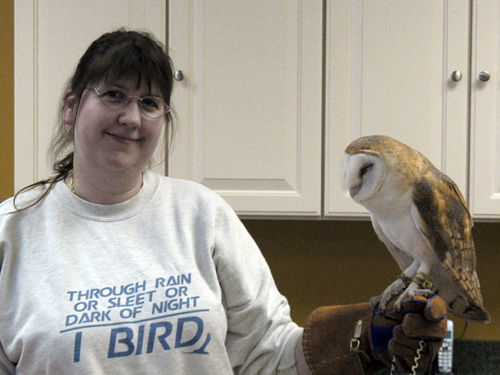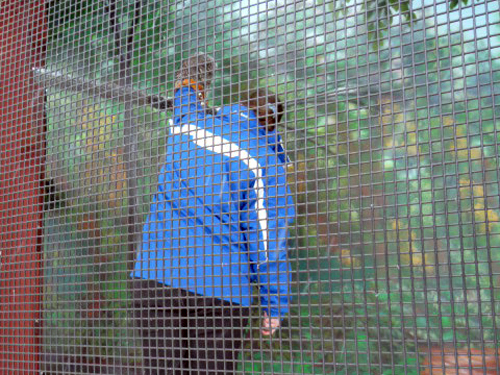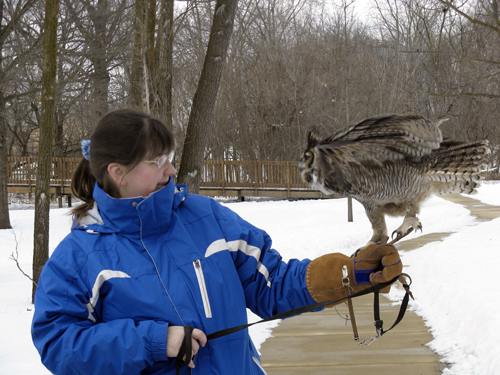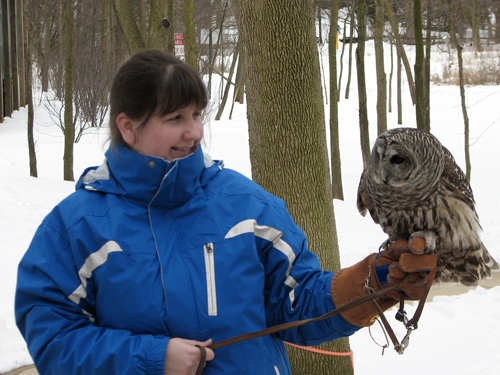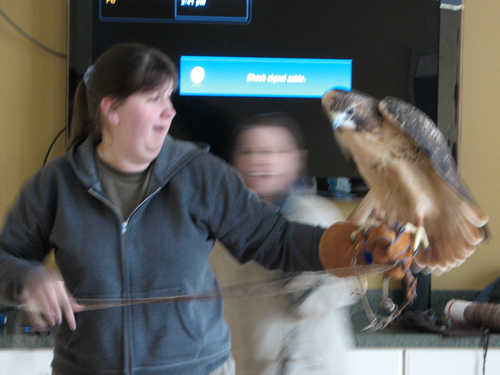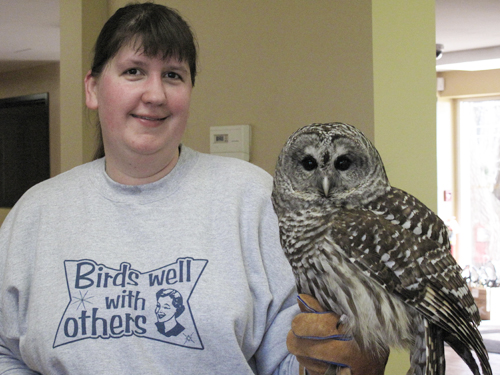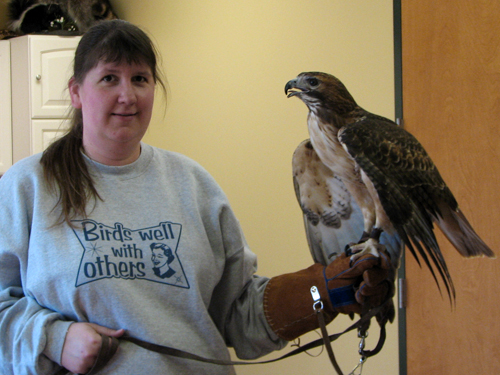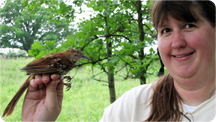43 species at Volo Bog
Yesterday we joined McHenry County Audubon’s walk at Volo Bog. We joined them last year at the bog around this time. We didn’t keep track of all species seen the first time, but I have a feeling our count of 43 yesterday beats last year’s tally. We had six FOY birds: American Wigeon, Barn Swallow, Yellow-rumped Warbler, Blue-gray Gnatcatcher, Great Egret and Brown Thrasher. Our full list follows.
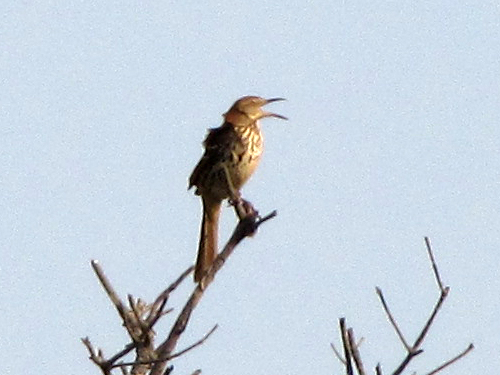
Our first FOY of the day was a singing Brown Thrasher
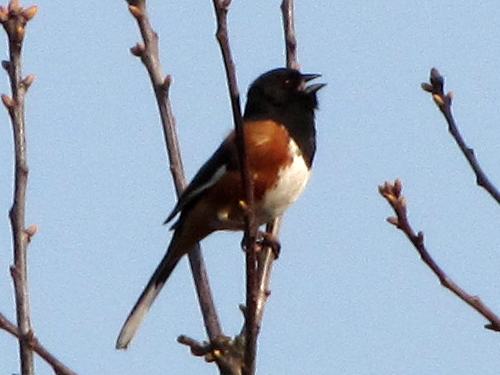
This Eastern Towhee gave us great looks from high atop a tree
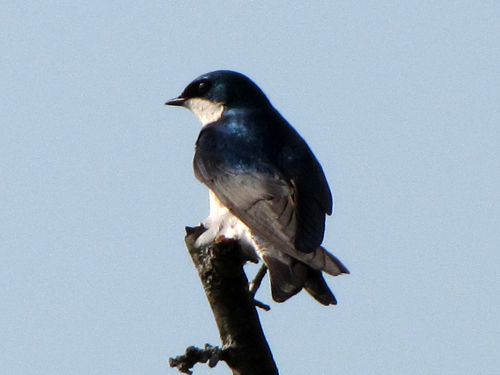
As last time, Tree Swallows were numerous
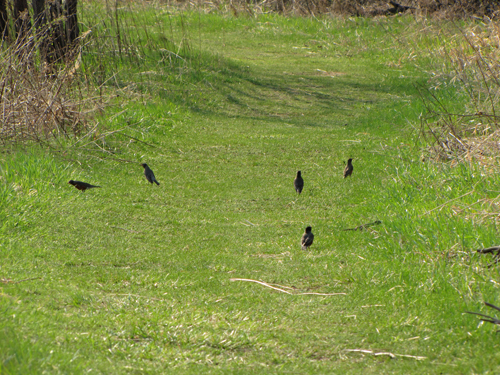
There were lots of American Robins, too, like this group that proceeded us on the path
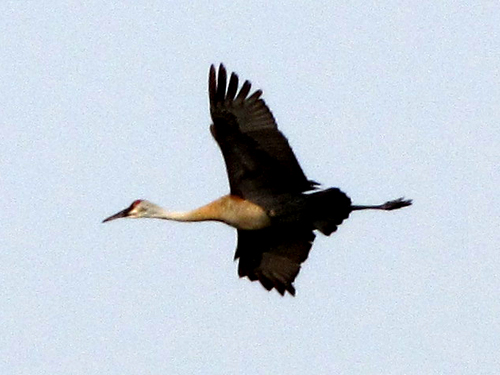
We came across Sandhill Cranes several times during the morning
It was a great walk on a beautiful day. The jury’s still out on my new camera, though.
——————————
Location: Volo Bog State Natural Area (Lake Co.)
Observation date: 4/10/10
Number of species: 43
Canada Goose – Branta canadensis 5
Mute Swan – Cygnus olor 2
Wood Duck – Aix sponsa 2
American Wigeon – Anas americana 1
Mallard – Anas platyrhynchos 12
Blue-winged Teal – Anas discors 7
Northern Shoveler – Anas clypeata 1
Ring-necked Duck – Aythya collaris 2
Hooded Merganser – Lophodytes cucullatus 4
Great Blue Heron – Ardea herodias 2
Great Egret – Ardea alba 1
Red-tailed Hawk – Buteo jamaicensis 1
American Coot – Fulica americana 20
Sandhill Crane – Grus canadensis 6
Killdeer – Charadrius vociferus 1
Ring-billed Gull – Larus delawarensis X
Mourning Dove – Zenaida macroura 5
Red-bellied Woodpecker – Melanerpes carolinus 9
Downy Woodpecker – Picoides pubescens 3
Hairy Woodpecker – Picoides villosus 1
Northern Flicker – Colaptes auratus 1
Eastern Phoebe – Sayornis phoebe 1
Blue Jay – Cyanocitta cristata 2
American Crow – Corvus brachyrhynchos 3
Tree Swallow – Tachycineta bicolor X
Barn Swallow – Hirundo rustica 1
Black-capped Chickadee – Poecile atricapillus 6
Blue-gray Gnatcatcher – Polioptila caerulea 1
Hermit Thrush – Catharus guttatus 1
American Robin – Turdus migratorius X
Brown Thrasher – Toxostoma rufum 1
Yellow-rumped Warbler – Dendroica coronata 12
Eastern Towhee – Pipilo erythrophthalmus 1
American Tree Sparrow – Spizella arborea 5
Song Sparrow – Melospiza melodia 4
Dark-eyed Junco – Junco hyemalis 1
Northern Cardinal – Cardinalis cardinalis 6
Red-winged Blackbird – Agelaius phoeniceus X
Eastern Meadowlark – Sturnella magna 1
Common Grackle – Quiscalus quiscula 2
Brown-headed Cowbird – Molothrus ater 2
American Goldfinch – Carduelis tristis 2
House Sparrow – Passer domesticus 3
This report was generated automatically by eBird v2(http://ebird.org)



